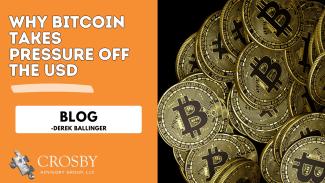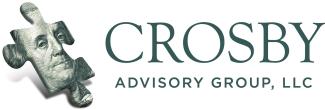
Why Bitcoin Takes Pressure Off the US Dollar: The Case for Neutral Reserve Assets
On Friday 6/25/2025, Donald Trump further indicated that increased adoption in Bitcoin has a stated advantage for the United States.
“I notice more and more, you pay in bitcoin. I mean people are saying it takes a lot of pressure off the dollar” - Donald Trump
Why does increased adoption of Bitcoin take pressure off of the US dollar? Bitcoin and Gold could replace the USD as a reserve asset for foreign countries that would have otherwise put their reserves in US Dollars and US Treasury Bills. This would reduce international demand for US dollars, easing pressure on the currency and helping US manufacturers and exporters.
In a period of apparent deglobalization and the accelerating record non-war budget deficits by the United States, countries will have increasing demand for neutral reserve assets like gold and Bitcoin. A reserve asset is the asset that companies, countries, central banks sweep their excess cash flows into for savings. It needs to be a strong store of value and something that can persist for decades if not centuries. The US Treasury bond served as the reserve asset of the entire world post WW2. The Bretton Woods Agreement established the post-war monetary order where countries would back their currency with US treasury bonds and the US would back its currency with gold. Post 1971, the dollar was no longer backed by gold but countries still held their reserves in US Treasuries and the US Dollar was the global reserve currency.
This was in a country's best interest to do so, the dollar was a strong currency, the US defense apparatus ensured that the US would never explicitly default on their obligations to pay its debt, and up until about 2015 the US generated more in GDP than it had in debt.
In a global fiat currency system, which just means countries issue currencies that are not backed by anything, the strength of a country's currency is driven by demand for that currency. Demand for the currency is driven by many things but a major driver is net exports. Holding every other driver of foreign currency movements constant and just focusing on trade to illustrate the point. If companies in the US want to buy wine from France, they have to convert US dollars to Euros to buy the wine. If countries export more than they import that puts upward pressure on the currency.
There is a stabilizing mechanism in global markets that helps currencies adjust in the long run so currencies wont get overvalued/undervalued. To illustrate, imagine you are a US business buying and selling goods to a country where everything is paid for and priced in gold, call it Golden and to make the math easy say gold is worth $1000 USD per ounce of gold. The US business needs computers from a company in Golden which are priced at one ounce of gold. Citizens of Golden save and spend in gold they do not experience currency fluctuations, they just experience the local rate of inflation as goods get cheaper or more expensive. In year 1, the US business buys 1 computer from Golden, they buy an ounce of gold and purchase the computer for one ounce of gold. In year 2 the price of gold appreciates to $1100 against the USD, the country of Golden experienced 0 inflation, the USD just depreciated against the price of gold. So now to the US business, they have to spend $1100 to get the same computer or can look to other countries where it may be cheaper to import from. This hurts the computer company in Golden, their exports got more expensive just due to exchange rate fluctuations. On the margins, there will be less exporting from Golden putting downward pressure on the currency. This works the other way as well, imagine in year 3, the USD appreciates so now $500 USD buys an ounce of gold. Now the computers are very cheap for the US business and they will import more from Golden. They will buy gold to be able to buy the computers putting upward pressure on the price of gold and downward pressure on USD.
Replace Golden with any other foreign currency and it acts the same way. Expensive currencies make it harder to export but you get a lot of value for your currency when you buy things internationally. Cheap currencies make your exports very attractive but its harder to import things internationally.
What Drives Currency Values?
Most countries: growth, interest rates, trade balances.
United States: All those factors, plus global demand from foreign governments holding dollars as reserves.
This makes the US dollar more expensive than it otherwise would if it were not the reserve currency. This comes with many advantages, this is why manufacturing jobs are shipped overseas because US businesses can buy much more labor in developing countries than it can domestically. This allows US industry to be primarily focused on high margin sectors like tech and finance and less in low margin sectors like manufacturing. The downside to this is what I stated before, its much harder to export physical products made in the US internationally. Those manufacturing jobs are great from a political perspective because they are high wage jobs that can be done without a college degree.
The whole goal behind tariffs and renegotiating trade was to bring those types of jobs back to the US. Tariffs simply just make foreign goods more expensive domestically so domestic consumers choose domestic producers instead of foreign producers. The other way this can be achieved is to make domestic goods cheaper for foreign consumers. The way you do that is you have to dramatically weaken the USD.
How would the US go about doing this? The US could discourage foreign investors from buying US assets.(1)(2)(3) The US could slash interest rates, providing a lower return for foreign investors buying US bonds.(4) They could give an alternative to the USD as a reserve asset.(5) This strips away the excess demand for USD and allows it to be valued more fairly the same way other currencies are valued.
The administration wont say they have an explicit goal of a weaker USD, but actions speak louder than words. The USD is already down -11.67% since January 1st and there are many actions to point to that indicate they are actively working on a weaker-USD policy. The strategic bitcoin reserve may be the most eloquent solution because it achieves the stated goal of reducing the USD status as the global reserve currency while being able to front-run other countries and benefit from the appreciation in the price of bitcoin. Bitcoin and gold are neutral reserve assets. Meaning they don't have an issuer and don’t have default concerns and it won't disrupt trade if Bitcoin or gold were to go up by 10x. Other countries have the added benefit of not holding savings backed by the US which has a spending problem, a debt problem and could turn hostile if the country did something against the US’s interest.
Adopting neutral reserve assets like gold and Bitcoin addresses the imbalances for the US and the rest of the globe. Gold is up 25% since January and 42.83% in the past 12 months and Bitcoin is up 67% in the past 12 months indicating strong demand globally for neutral reserve assets. The US Government is going to release the final strategy for the Bitcoin Strategic Reserve sometime this summer. Other countries will be watching and may follow suit, an allocation to gold and Bitcoin may position a portfolio to benefit from these trends in global finance.
https://subscriber.politicopro.com/article/2025/06/house-passes-bill-to-crack-down-on-china-farmland-purchases-00419452
https://www.reuters.com/markets/would-trump-break-capital-controls-taboo-mike-dolan-2025-02-12/?utm
https://www.reuters.com/business/us-steel-shares-rise-after-golden-share-details-unveiled-2025-06-16/?utm
https://thehill.com/business/5377145-trump-jerome-powell-note/
https://www.whitehouse.gov/presidential-actions/2025/03/establishment-of-the-strategic-bitcoin-reserve-and-united-states-digital-asset-stockpile/
Crosby Advisory Group, LLC is a registered investment advisor providing financial planning, insurance and business growth strategies. This blog is for information purposes and does not represent individual investment advice. Not all investments are suitable for all people. You should carefully consider all risks and fees before making an investment.

